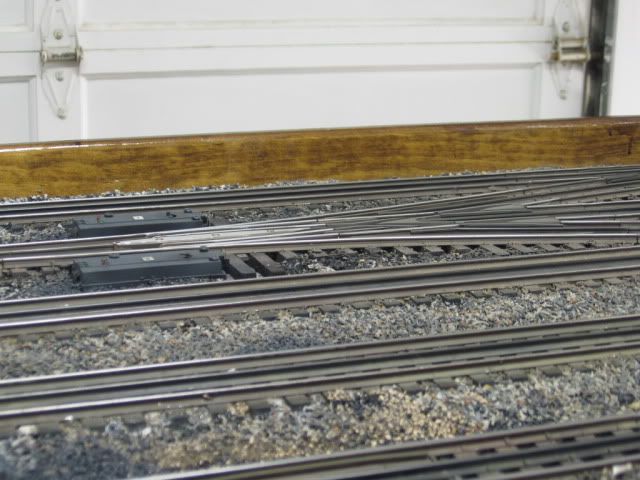I have all Gargraves/Ross on my layout. Haven't painted it yet, but I will. And, when I do I'm going to first try the technique that has worked for me in building HO and N scale layouts.
Airbrush. No masking. First spray the sides of the rails with rail brown color...Floquil has this, but any combo of reds/browns will look good. Spray the rails at a LOW angle...i.e.,near horizontal to track. (A hand-held piece of cardboard on the opposite side of the track as you move along will keep overspray from scenery, walls, etc.)
After spraying the rails, while the paint is yet 'wet', wipe the tops of the rails with a clean rag, paper towel,...whatever.
After the rails are dry, switch your airbrush to a grayish-brown aged tie color. This might involve more than one color in more than one pass to achieve the effect you like, but that comes from trial/error/observation/preference.) Now spray the tops of the ties with this color holding the gun as nearly vertical to the track as possible. The idea is that the rail tops provide some 'shielding' of the rail sides, so that there is little paint overspray/adhesion to the rail sides to alter its brown color. Again, while this paint is yet 'wet' wipe the rail tops as before.
I only became a believer of this simple technique after trying it myself on HO and N scale track. It really works! If you want to experiment, get some old track pieces and practice. BTW, this is not my own technique...it's been published many times in layout building articles in several magazines and help books before.
So, as for masking....it's just not worth any effort in painting the track, IMHO. On the other hand, if you've already painted the track and now want to do some adjacent scenery work...paint/plaster/etc....it's a good, worthwhile idea to quicly mask the track area...rails/ties/ballast...to keep that looking good.
FWIW, always...
KD





















